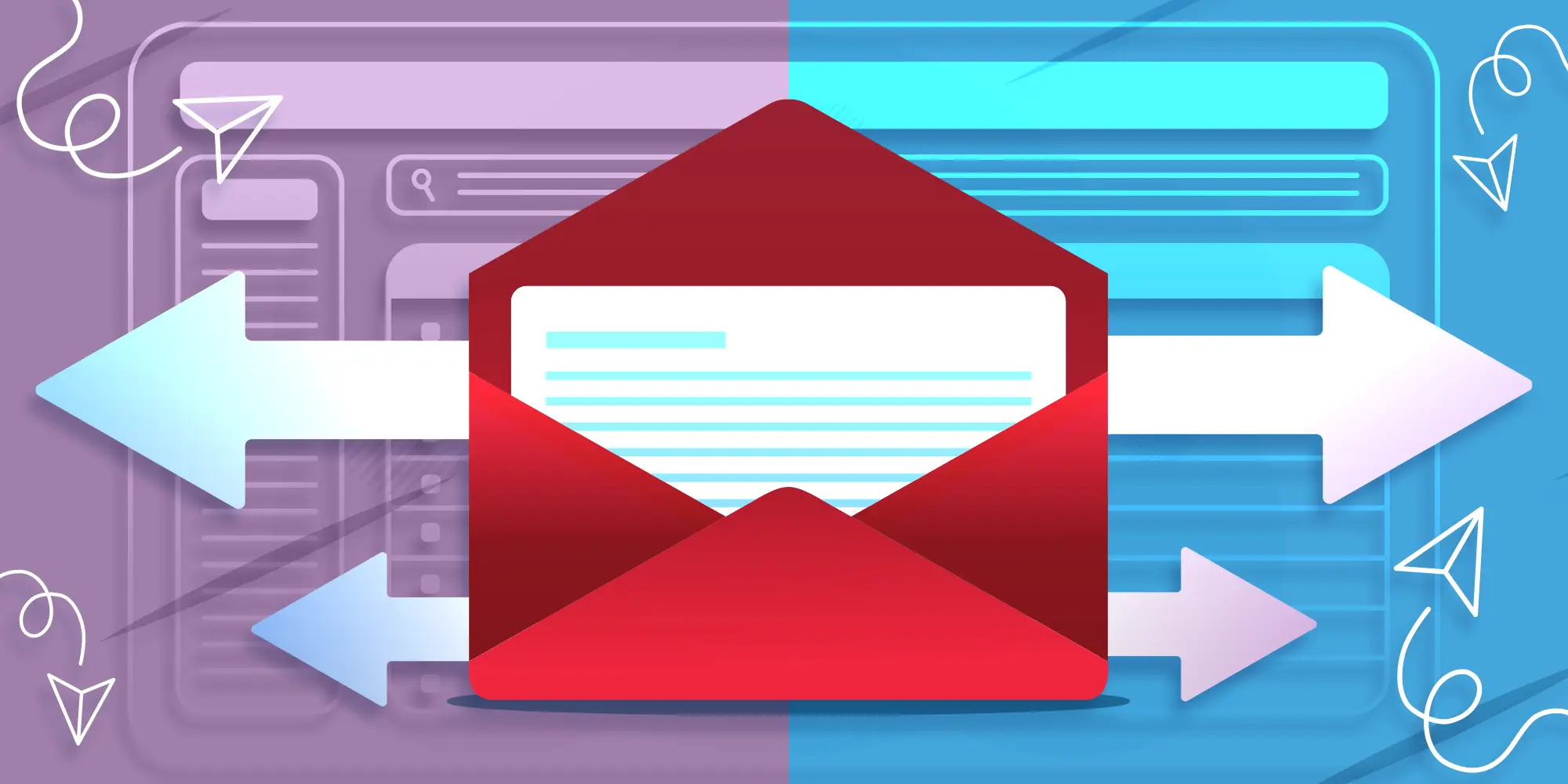Key Takeaways:
Learn the benefits of email segmentation.
Find out the criteria for segmenting your email lists.
Discover simple steps to segment your email audience.
Uncover strategies for targeted email campaign success.
You’re likely familiar with audience segmentation, the concept of dividing your audience into distinct groups based on shared characteristics. This strategic division allows businesses to tailor their messaging and offers to meet the unique needs and interests of each segment, leading to more personalized and effective marketing efforts.
But the leap from understanding the “why” of segmentation to executing the “how” can seem daunting for small business owners. Join us as we delve into the benefits of audience segmentation for email marketing and equip you with practical steps to start doing it.
5 Benefits of Segmenting Your Audience
Here are just five rewards you’ll reap when you start doing email segmentation for more personalized customer correspondence:
1. Increased Engagement Rates
By sending content that resonates with the specific interests and needs of each segment, businesses can significantly increase the likelihood of engagement. Segmented campaigns ensure that your audience receives relevant information, making them more likely to open, read, and interact with your emails.
2. Improved Conversion Rates
Personalized emails tailored to the unique characteristics of each segment can drive higher conversion rates. When recipients feel that an email speaks directly to them and addresses their specific needs or problems, they are more inclined to take the desired action, whether it’s making a purchase, signing up for a webinar, or downloading a resource.
3. Enhanced Customer Satisfaction and Loyalty
Segmentation fosters a sense of understanding and appreciation between a business and its customers. By acknowledging and addressing the diverse needs of your audience, you build stronger relationships, enhancing customer satisfaction and loyalty. This personalized approach makes customers feel valued, encouraging long-term loyalty to your brand.
4. Better Email Deliverability and Reduced Spam Reports
Sending relevant, targeted content reduces the likelihood of your emails being marked as spam. When recipients consistently find value in your emails, they’re more likely to engage positively, improving your sender reputation and email deliverability rates. Conversely, irrelevant emails are often ignored or reported as spam, which can harm your deliverability.
5. Better Understanding of Each Segment
Segmentation allows you to gather detailed insights into the behavior and preferences of different audience groups. This knowledge is invaluable for crafting future content and offers that hit the mark, ensuring that your audience remains engaged and continues to find value in your communications. Over time, this deepened understanding enables you to refine your segmentation strategy further, creating a cycle of continuous improvement and engagement.
Criteria for Segmenting an Email List
Segmenting an email list is a strategic approach that allows you to send more personalized and relevant emails to your subscribers. And more customers are expecting this level of customization, sometimes known as hyper-personalization. Here are some key criteria to consider when segmenting your email list:
Demographic Information
This includes basic characteristics of your audience such as age, gender, occupation, and income level. Demographic segmentation helps you tailor your messaging to fit the general profile of each group. For instance, the content and offers that resonate with millennials might differ significantly from those that appeal to baby boomers.
Geographic Location
Knowing where your subscribers live can be incredibly useful, especially for businesses that operate in multiple regions or have location-specific offerings. Segmentation by country, city, or even climate zone allows you to customize your emails based on local preferences, weather conditions, or regional events, making your communications more relevant and engaging.
Psychographic Factors
This segmentation goes deeper into understanding your audience’s interests, lifestyle, values, and attitudes. Psychographic factors give insight into what motivates your subscribers, enabling you to connect on a more personal and emotional level. For example, you might segment your list into environmental enthusiasts, tech aficionados, or fitness buffs and tailor your content accordingly.
Behavioral Data
Perhaps one of the most actionable forms of segmentation, behavioral data, looks at how subscribers interact with your business. This can include purchase history, website activity, email engagement (such as open rates and click-through rates), and even loyalty program participation. By analyzing this data, you can identify patterns and preferences, allowing you to send targeted emails that encourage repeat purchases, reward engagement, or re-engage dormant subscribers.
4 Simple Steps to Segment Your Email Audience
Segmenting your email audience is a powerful strategy to enhance the effectiveness of your email marketing campaigns. Here’s how to do it in just four easy steps:
1. Collect Relevant Data
Start by gathering essential information through online sign-up forms, analyzing purchase history, and leveraging website analytics. Aim for a balance in the data collection process to ensure you’re capturing useful information without deterring potential subscribers.
2. Analyze Your Audience
Utilize tools like Google Analytics and your CRM to sift through the data, identifying patterns that suggest distinct audience segments. Remember, the importance of context in email segmentation cannot be overstated. It’s the key to unlocking truly meaningful insights. For more on the critical role of context, revisit this blog.
3. Create Segmentation Criteria
With your analysis in hand, define criteria for each segment that align with your marketing objectives. This could range from demographics to behavioral patterns, tailored to suit your strategic goals.
4. Segment Your Email List
Use your email marketing platform to categorize your list according to the established criteria. This segmentation allows for more personalized and targeted email campaigns, significantly boosting engagement and conversions.
“The importance of context in email segmentation can’t be overstated. It’s the key to unlocking truly meaningful insights.”
Jennifer Shaheen, President and Founder, TTG
Strategies for Targeted Email Campaign Success
Personalized content, optimized timing, and continuous testing are key to developing email campaigns that not only reach but truly engage your segmented audience, driving both satisfaction and conversions. Here are some tips for doing each of these tasks well.
Personalized Content Creation
Understanding the nuances of your audience is crucial in email marketing, especially when your contacts span diverse industries like luxury retail, plumbing, and electrical services. Sending a one-size-fits-all email about luxury retail topics to such a varied group dilutes its impact, as plumbers and electricians may find little relevance in the content. Instead, crafting targeted emails ensures your message resonates: a dedicated email for luxury retail contacts featuring specialized blogs, videos, and training enriches their experience and engagement.
By analyzing the engagement metrics of these tailored emails, you gain insights into what content captivates your audience, guiding your future marketing efforts. Similarly, home services contacts receive content curated for their interests, potentially segmented further for interior designers and smart home installers, ensuring every email sent is a step towards building a more engaged and responsive audience.
Timing and Frequency
Timing your emails to match the preferences of different segments can significantly enhance engagement. Conduct tests to identify optimal send times for each segment and adjust your strategy accordingly. For example, our analysis has shown that jewelry retailers find their audience most active on Thursdays, while construction industry contacts engage most on Tuesdays at 6:00 AM. Tailoring your send times to these preferences ensures your emails land when your audience is most receptive.
A/B Testing
A/B testing is a powerful tool for optimizing your email campaigns. By testing one variable at a time (e.g. subject lines, clickable elements, email content length, placed order rates, etc.), you can discern what resonates best with each segment. Klaviyo* offers a robust A/B testing feature that allows marketers to fine-tune their campaigns based on real audience feedback.*
It’s worth noting that A/B testing capabilities can vary across different email marketing platforms. Always tailor your testing strategy to the tools at your disposal, ensuring you’re making the most informed decisions to engage your segmented audience effectively.
“A/B testing is a powerful tool for optimizing your email campaigns. By testing one variable at a time, you can discern what resonates best with each segment.”
Genevieve Belcher, Operations Manager, TTG
TTG: Your Partner for Segmentation Success
Step up your email segmentation with the help of the TTG experts to start reaping the rewards. Find out more about our Strategy service!
*DISCLAIMER: Links included in this article might be affiliate links. If you purchase a product or service with the links that we provide, TTG may receive a small commission. There is no additional charge to you!





